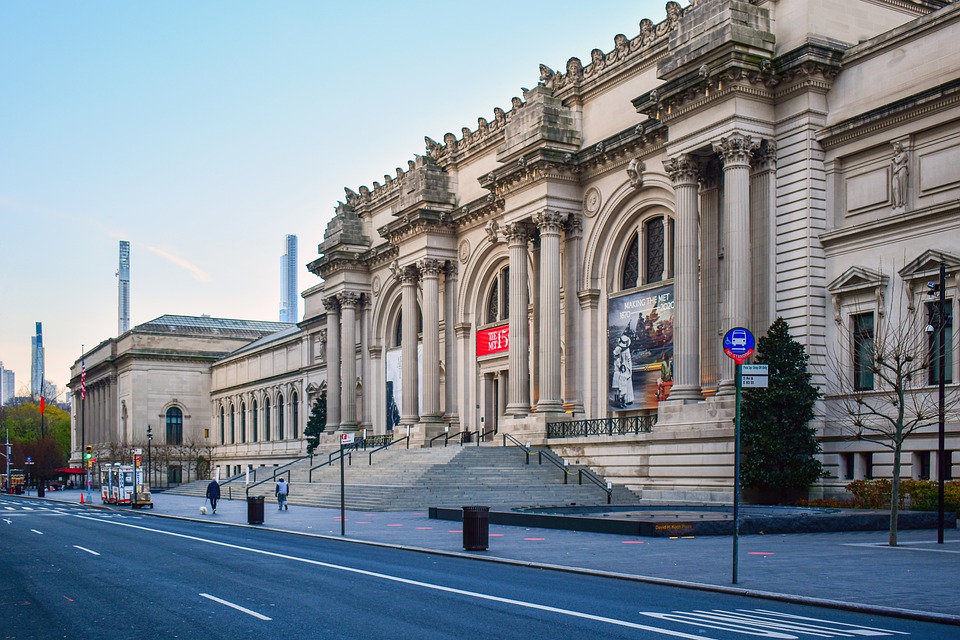The Metropolitan Museum of Art in New York City is one of the largest and second most visited art museums in the world. The Museum of Art is located at the eastern end of Central Park, in a block called the Museum Mile in Manhattan. With exhibits ranging from classical Antiquity and Ancient Egypt to paintings and sculptures by virtually every modern master, the museum’s collection contains more than two million works of art.

The museum was founded in 1870 by a group of American businessmen and art lovers (the Union League Club of New York). It first opened to the public February 20, 1872. In its current building, designed in the Neo-Gothic style by American architects Calvert Vaux and Jacob Mold, the museum moved in 1880.
The museum was based on three private collections of 174 works of European painting, including works by Hals, Van Dyck, Tiepolo, and Poussin. The collection grew rapidly, and after John Kensett’s death, 38 paintings from his private collection came into the possession of the museum. But only in the twentieth century did the museum become world famous. In 1907, the museum acquired its first painting by Auguste Renoir.
The main building of the museum, called The Met by Americans, is almost the largest art gallery in the world. The Met’s permanent exhibition is divided into 19 separate sections, each with its own staff of curators, restorers, and scholars. The undoubted crown jewel of the Museum is the American Decorative Arts Section, containing some 12,000 works of art from the late 17th century to the early 20th century, displayed in twenty-five rooms. The centerpiece of this section is the richest collection of American glass, probably the most extensive and complete in the world, including an array of pieces from the Louis Comfort Tiffany. Also very interesting is the big silver collection famous for the fact that it contains objects by Paul Revere and pieces by Tiffany & Co.
Today the Met is rightly proud of its collection of Impressionists and Post-Impressionists. The Egyptian art collection is considered one of the most comprehensive and representative in the world. The Met has quite a few collections of various types. Among them, for example, the works of photographers Walker Evans, Diane Arbus, Alfred Stiglitz, an exhibition of musical instruments and others.
The museum exists with funds from sponsors and donors with little state support. In April 2013, collector Leonard Lauder donated his collection of 78 Cubist works, including 33 works by Picasso, to the museum. Each year the museum publishes an “Annual Report” listing new acquisitions.
